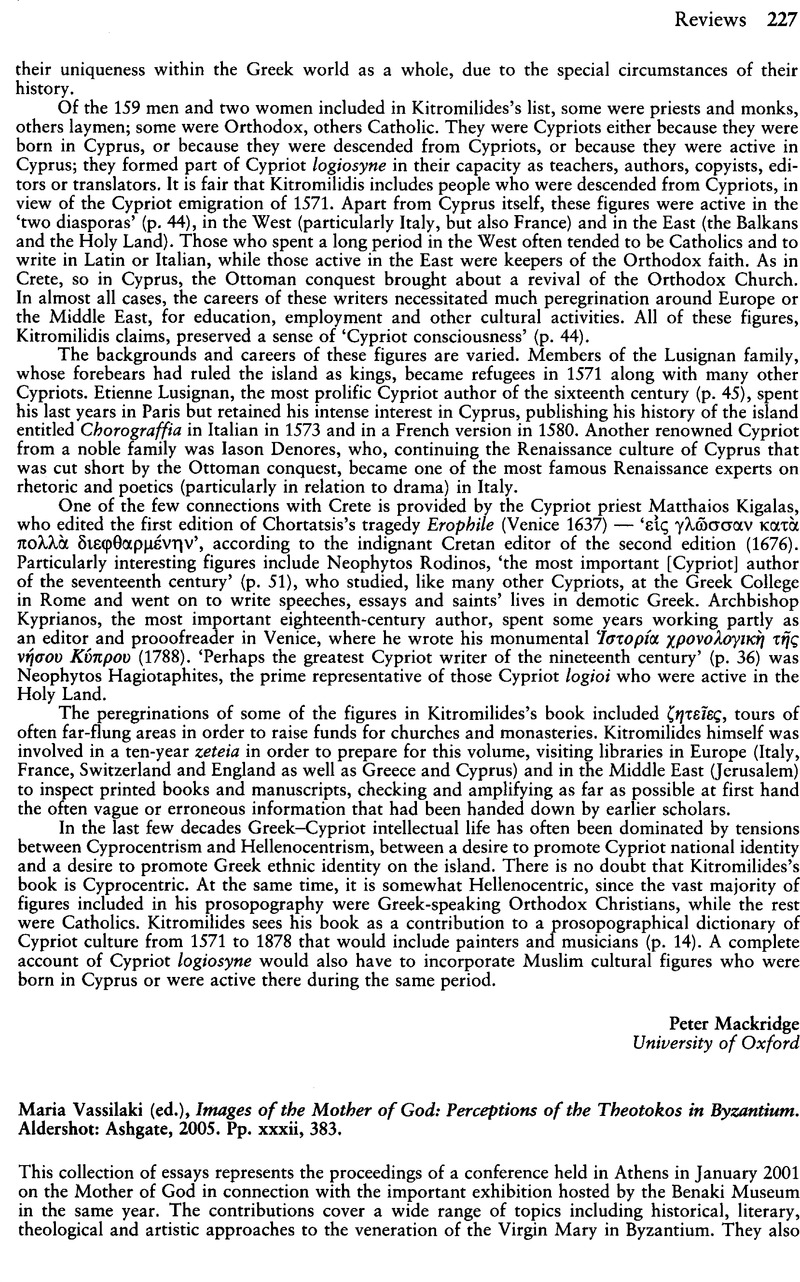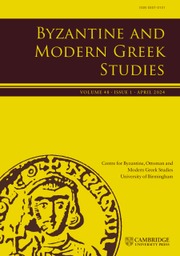No CrossRef data available.
Article contents
Maria Vassilaki (ed.), Images of the Mother of God: Perceptions of the Theotokos in Byzantium. Aldershot: Ashgate, 2005. Pp. xxxii, 383.
Published online by Cambridge University Press: 22 January 2016
Abstract

- Type
- Reviews
- Information
- Copyright
- Copyright © The Centre for Byzantine, Ottoman and Modern Greek Studies, University of Birmingham 2006
References
1 Vassilaki, M. (ed.), Mother of God: Representations of the Virgin in Byzantine Art (Milan and Athens 2000)Google Scholar.
2 Swanson, R.N. (ed.), The Church and Mary. Studies in Church History 39 (Woodbridge, Suffolk and Rochester, NY, 2004)Google Scholar.
3 See, for example, Constas, N.F., Proclus of Constantinople and the Cult of the Virgin in Late Antiquity (Leiden 2003)Google Scholar; Peltomaa, L.M., The Image of the Virgin Mary in the Akathistos Hymn (Leiden 2001)Google Scholar.
4 Dr Leslie Brubaker directs this project, with the present reviewer acting as Research Fellow. Three major publications will appear after its conclusion in September 2006: a monograph containing translations, commentaries and some new editions of eighth-century homilies composed in honour of major Marian feast-days; the proceedings of the conference, ‘The Mother of God in Byzantium: Relics, Icons, and Texts’, to be held at St Edmund Hall, Oxford, 16-19 August 2006; and a book or long article analysing the results of interdisciplinary work on the topic as a whole.
5 This work is published in full in his monograph, Wolf, G., Salus Populi Romani: Die Geschichte römischer Kultbilder im Mittelalter (Weinheim 1990)Google Scholar.
6 See the current discussion on the subject between Brubaker, L., ‘Icons before Iconoclasm’, in Morfologie sociali e culturali in Europa fra tarda antichità e alto Medioevo, Settimane di studio del Centro italiano di studi sull’alto Medioevo 45 (Spoleto 1998), 1215-54Google Scholar, and Sansterre, J.-M., ‘Entre deux mondes: La Vénération des images à Rome et en Italie d’après les textes des Ve-Xe siècles’, Roma fra Oriente e Occidente, Settimane di studio del Centro italiano di studi sull’alto Medioevo 49 (Spoleto 2002), 719-53Google Scholar.
7 See Pentcheva, B., Icons and Tower: The Mother of God in Byzantium (University Park, PA, 2006)Google Scholar; eadem, ‘The supernatural protector of Constantinople: the Virgin and her icons in the tradition of the Avar siege’, BMGS 26 (2002) 2–41.
8 See, for example, Holum, K., Theodosian Empresses: Women and Imperial Domination in Late Antiquity (Berkeley 1982)Google Scholar; Limberis, V., Divine Heiress: The Virgin Mary and the Creation of Christian Constantinople (London 1994)Google Scholar; Cooper, K., ‘Contesting the nativity: wives, virgins, and Pulcheria’s Imitatio Mariae’, Scottish Journal of Religious Studies 19 (1998) 31–43 Google Scholar.


